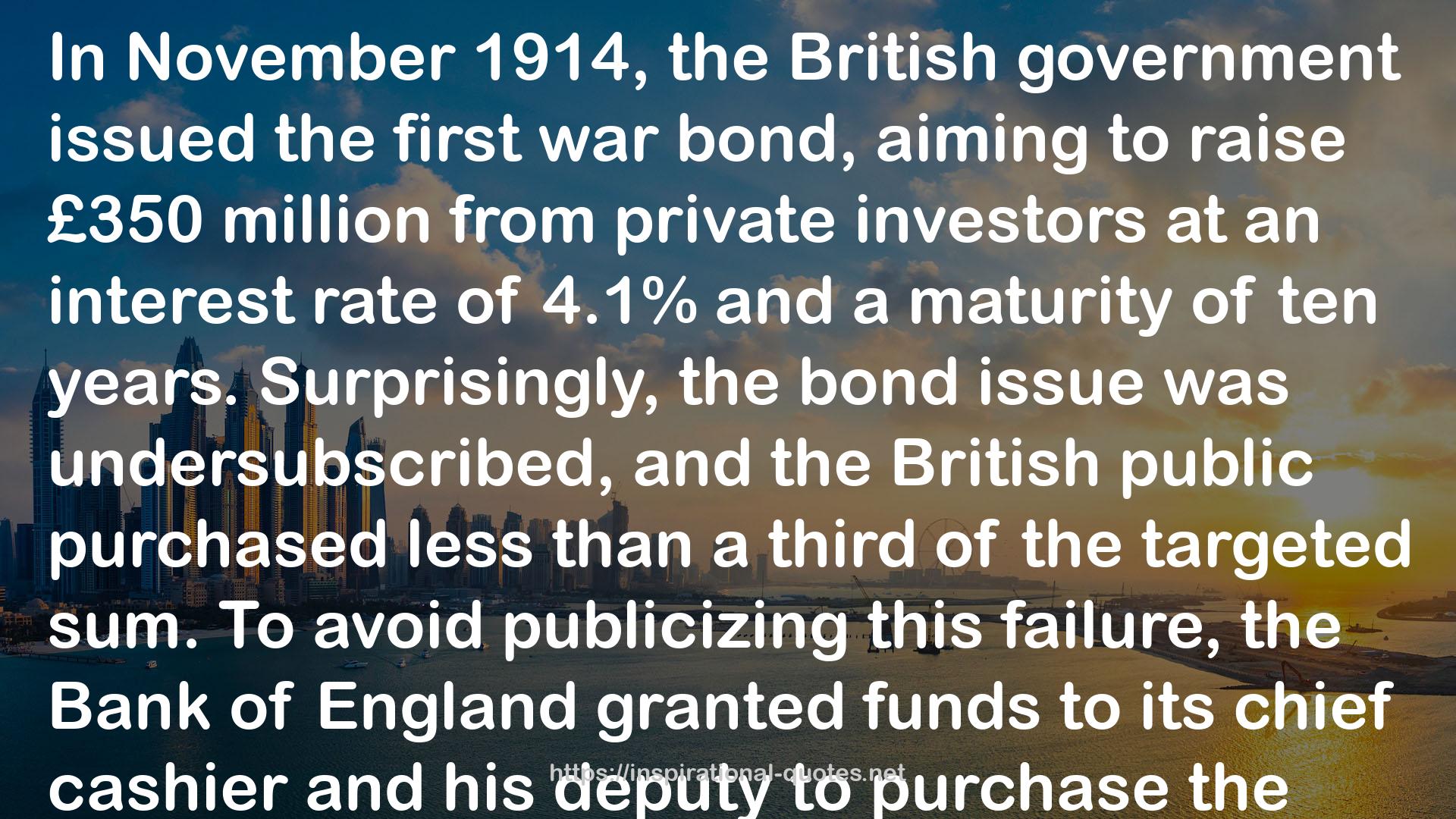" In November 1914, the British government issued the first war bond, aiming to raise £350 million from private investors at an interest rate of 4.1% and a maturity of ten years. Surprisingly, the bond issue was undersubscribed, and the British public purchased less than a third of the targeted sum. To avoid publicizing this failure, the Bank of England granted funds to its chief cashier and his deputy to purchase the bonds under their own names. The Financial Times, ever the bank’s faithful mouthpiece, published an article proclaiming the loan was oversubscribed. John Maynard Keynes worked at the Treasury at the time, and in a secret memo to the bank, he praised them for what he called their “masterly manipulation.” Keynes’s fondness for surreptitious monetary arrangements would go on to inspire thousands of economic textbooks published worldwide. The Bank of England had set the tone for a century of central bank and government collusion behind the public’s back. The Financial Times would only issue a correction 103 years later,7 when this matter was finally uncovered after some sleuthing in the bank’s archives by some enterprising staff members and published on the bank’s blog.8 "
― Saifedean Ammous , The Fiat Standard: The Debt Slavery Alternative to Human Civilization
